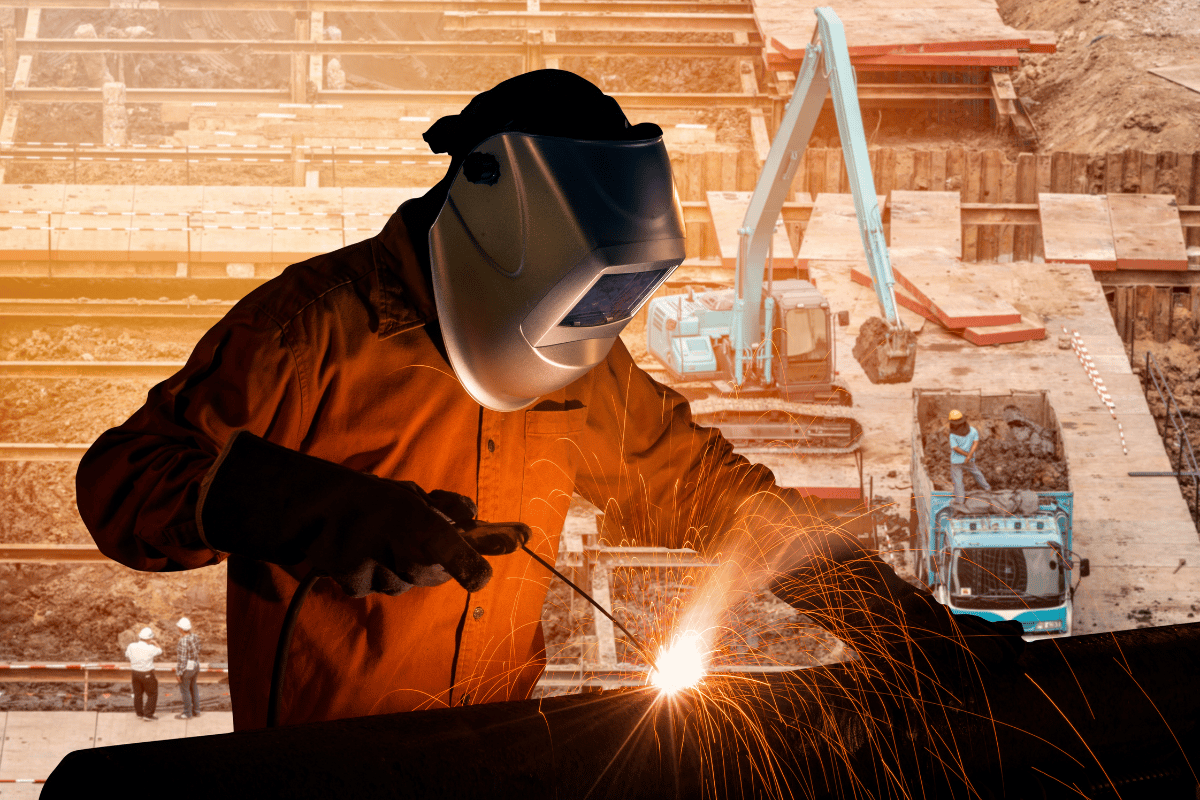Welding is the process of fusing metal parts together by heating the surfaces of their joined melting points. In order for metal to attain such hot temperatures, welders use a variety of energy sources such as ultrasound technology, gas flames, electron beams, lasers, and much more. Even with OSHA certified protective measures in place, welding operators still face an array of safety hazards in the workplace. While welding has been around for nearly 200 years, professional welders still commonly succumb to injuries or even, unfortunately, fatalities. Let’s explain some of the major hazard’s welders may encounter in the workplace and how to best protect against them.
Hazard 1: Fumes, Gases, & Respiratory Issues
It’s no surprise that the absolute most dangerous welding health hazard comes from an overexposure to fumes and gases. Both acute and chronic health risks, including lung cancer, are all associated with inhaling welding fumes. Common acute health issues include irritation in the throat, eyes, and nose as well as nausea and dizziness. In addition to lung cancer, other chronic health risks include kidney damage, stomach ulcers, skin irritation complications of the nervous system, headaches, and the onset of various cancers.
The most dangerous fumes from welding come from hexavalent chromium and manganese, as prolonged exposure to either of these can cause chronic health issues to the respiratory tract. Other common hazardous welding fumes include tungsten, oxides of sulfur, and carbon monoxide. While all welding shops must follow the American National Standards Institute (ANSI) codes and standards, there are additional preventative measures to protect your respiratory health. By combining 3M’s innovative filtration science with elegant design, O2 Nose Filters provides a discreet and effective solution to protect you from breathing in harmful welding fumes.
Hazard 2: Electrical Hazards
Welding requires electricity, so electrocution and electrical shock are ever-present health hazards. While a shock of 50 volts can prove enough to result in a fatality, welding voltage typically ranges from 20-to-100 volts. Electrical welding accidents are commonly a result from faulty wiring or poorly grounded equipment. Electrical hazards are also seen when a welder touches two metal objects together with voltage between them, which often leads to the electrocuted individual unable to let go of either object. Welding precautions you can take to protect yourself from electrical hazards include wearing rubber gloves and safety glasses, PPE (Personal Protective Equipment) such as these should help prevent you from suffering an electric shock.
Hazard 3: Burn Hazards & Explosions
A welding arc creates extreme temperatures, up to 10,000 degrees, which pose fire and explosion hazards if safety protocols are not followed. Spatter from welding can also reach up to 35 feet, meaning that heat sparks can ignite far-off flammable materials such as oil, paint, gasoline, wood, paper, propane, and more. The UV radiation that welding arcs emit is particularly dangerous as it burns unprotected skin and causes cancer after long-term exposure. Wearing proper PPE is one of the key steps to preventing burns from welding. Make sure that you’re regularly inspecting and maintaining your protective equipment, which includes not wearing clothes with cuffs or open pockets, ensuring your clothing doesn’t have holes, and using flame-resistant hearing protection.
Welding Hazard Protective Measures
Welding is a risky job that requires lots of training in order to ensure on-site safety. If you don’t take the necessary precautions to prevent accidents and injuries, then it could dramatically impact the rest of your life. We’ve detailed that the proper PPE is essential to protecting yourself from burns, electrical hazards, and explosions, although we see that there’s additional safety measures you can take against dangers related to fumes, gases, and respiratory issues.
While our nasal passageways try their best when it comes to filtering harmful particulate matter from welding, they aren’t perfect. That’s why O2 Nose Filters are such an effective solution when it comes to improving our mental and physical health. Nose filters are a discreet, effective option to protect against airborne particulate matter. The O2 Nose Filter uses 3M’s patented AEM™ electrostatic technology to capture allergens, viruses, and other particulates, making them a valuable tool for anyone who wants to drastically limit the pollutants and pollens they breathe in daily.

BLOCK IT OR BREATHE IT
Click here for a FREE (+S&H) sample pack to see which size works best for you!



